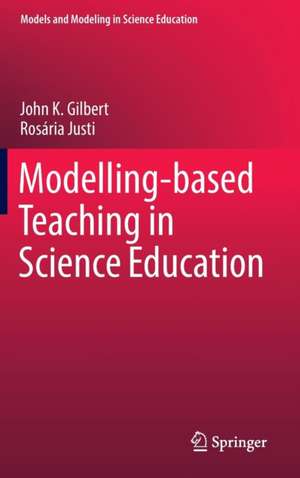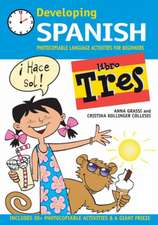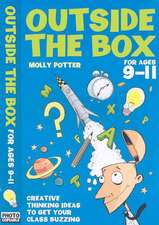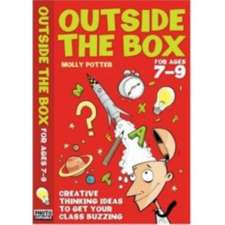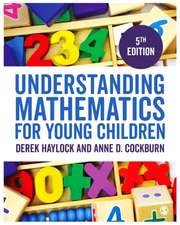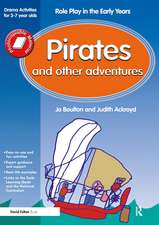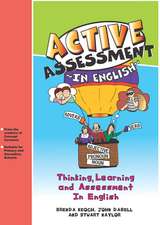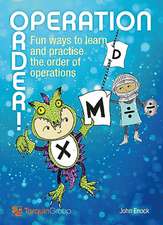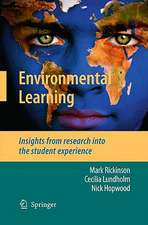Modelling-based Teaching in Science Education: Models and Modeling in Science Education, cartea 9
Autor John K. Gilbert, Rosária Justien Limba Engleză Hardback – 6 iun 2016
| Toate formatele și edițiile | Preț | Express |
|---|---|---|
| Paperback (1) | 733.08 lei 38-44 zile | |
| Springer International Publishing – 30 mai 2018 | 733.08 lei 38-44 zile | |
| Hardback (1) | 793.89 lei 38-44 zile | |
| Springer International Publishing – 6 iun 2016 | 793.89 lei 38-44 zile |
Preț: 793.89 lei
Preț vechi: 1044.60 lei
-24% Nou
Puncte Express: 1191
Preț estimativ în valută:
151.91€ • 159.03$ • 125.70£
151.91€ • 159.03$ • 125.70£
Carte tipărită la comandă
Livrare economică 01-07 aprilie
Preluare comenzi: 021 569.72.76
Specificații
ISBN-13: 9783319290386
ISBN-10: 331929038X
Pagini: 287
Ilustrații: XVIII, 264 p. 27 illus., 18 illus. in color.
Dimensiuni: 155 x 235 x 18 mm
Greutate: 0.58 kg
Ediția:1st ed. 2016
Editura: Springer International Publishing
Colecția Springer
Seria Models and Modeling in Science Education
Locul publicării:Cham, Switzerland
ISBN-10: 331929038X
Pagini: 287
Ilustrații: XVIII, 264 p. 27 illus., 18 illus. in color.
Dimensiuni: 155 x 235 x 18 mm
Greutate: 0.58 kg
Ediția:1st ed. 2016
Editura: Springer International Publishing
Colecția Springer
Seria Models and Modeling in Science Education
Locul publicării:Cham, Switzerland
Public țintă
ResearchCuprins
Chapter 1. Facing the challenges to science education in schools: The contribution of modelling.- Chapter 2. Models of modelling.- Chapter 3. Towards authentic learning in science education.- Chapter 4. Approaches to modelling-based teaching.- Chapter 5. Learning scientific concepts from modelling-based teaching.- Chapter 6. The role of argumentation in modelling-based teaching.- Chapter 7. The contribution of visualisation to modelling-based teaching.- Chapter 8. Analogies in modellling-based teaching and learning.- Chapter 9. Learning about science through modelling-based teaching.- Chapter 10. Learning progression during modelling-based teaching.- Chapter 11. Educating teachers to facilitate modelling-based teaching.- Chapter 12. Modelling-based teaching and learning: Current challenges and novel perspectives.
Recenzii
“Gilbert and Justi’s book makes a real and multi-faceted contribution to modelling-based teaching and to raising awareness of its possibilities for addressing contemporary educational issues and aims in science education. … a significant source of ideas, suggestions and information for science education researchers and science teachers who are actively or potentially interested in teaching and learning about models and modelling, which reflect, I consider, the essential character of scientific knowledge and practice.” (Maria Develaki, Science and Education, Vol. 26, 2017)
Textul de pe ultima copertă
This book argues that modelling should be a component of all school curricula that aspire to provide ‘authentic science education for all’. The literature on modelling is reviewed and a ‘model of modelling’ is proposed. The conditions for the successful implementation of the ‘model of modelling’ in classrooms are explored and illustrated from practical experience. The roles of argumentation, visualisation, and analogical reasoning, in successful modelling-based teaching are reviewed. The contribution of such teaching to both the learning of key scientific concepts and an understanding of the nature of science are established. Approaches to the design of curricula that facilitate the progressive grasp of the knowledge and skills entailed in modelling are outlined. Recognising that the approach will both represent a substantial change from the ‘content-transmission’ approach to science teaching and be in accordance with current best-practice in science education, the design of suitable approaches to teacher education are discussed. Finally, the challenges that modelling-based education pose to science education researchers, advanced students of science education and curriculum design, teacher educators, public examiners, and textbook designers, are all outlined.
Caracteristici
Provides a comprehensive and critical review of the research literature on models and modelling Considers relevant subordinate fields e.g. ‘visualisation’, ‘nature of science’, ‘analogy’, in detail Guides the reader on how to engage students successfully in modelling-based teaching
